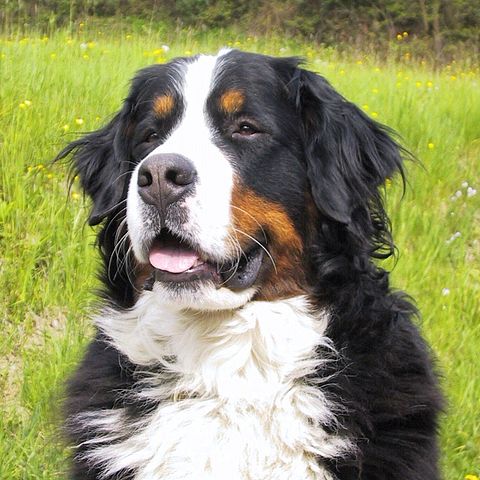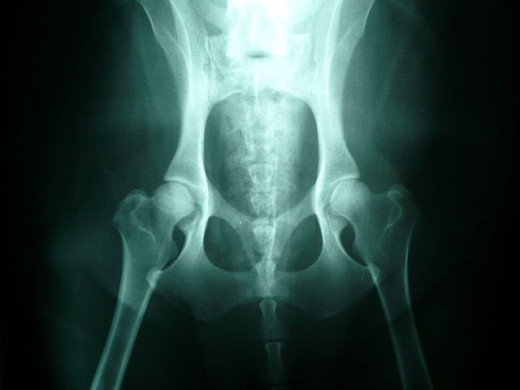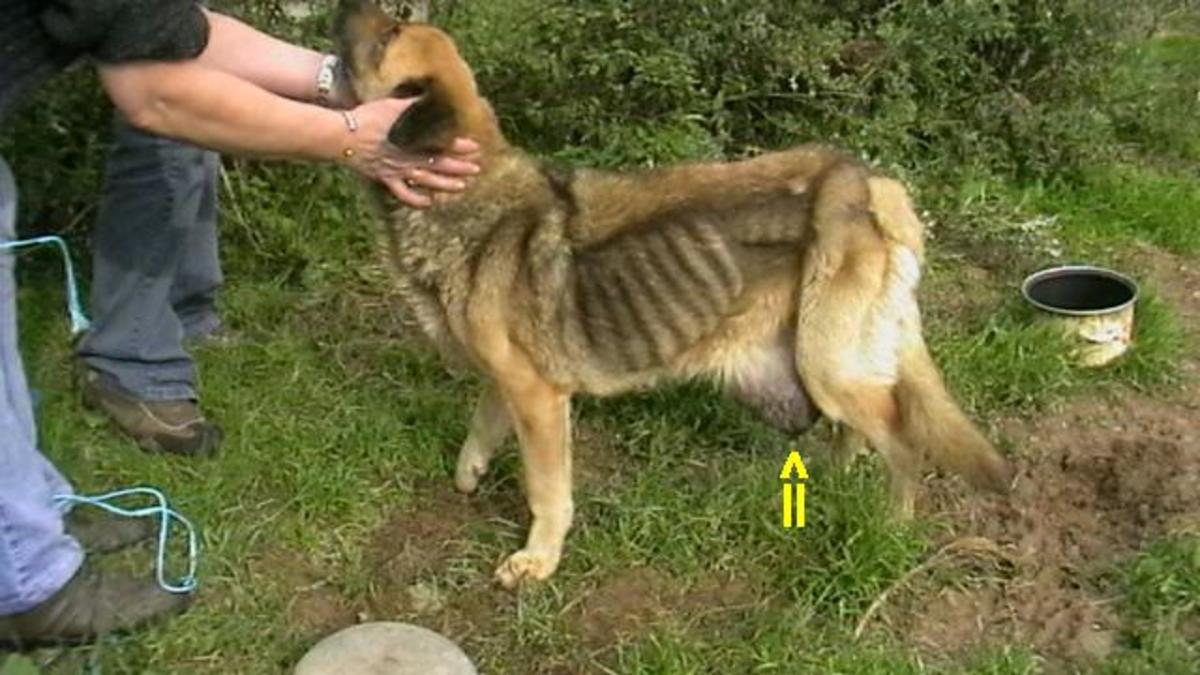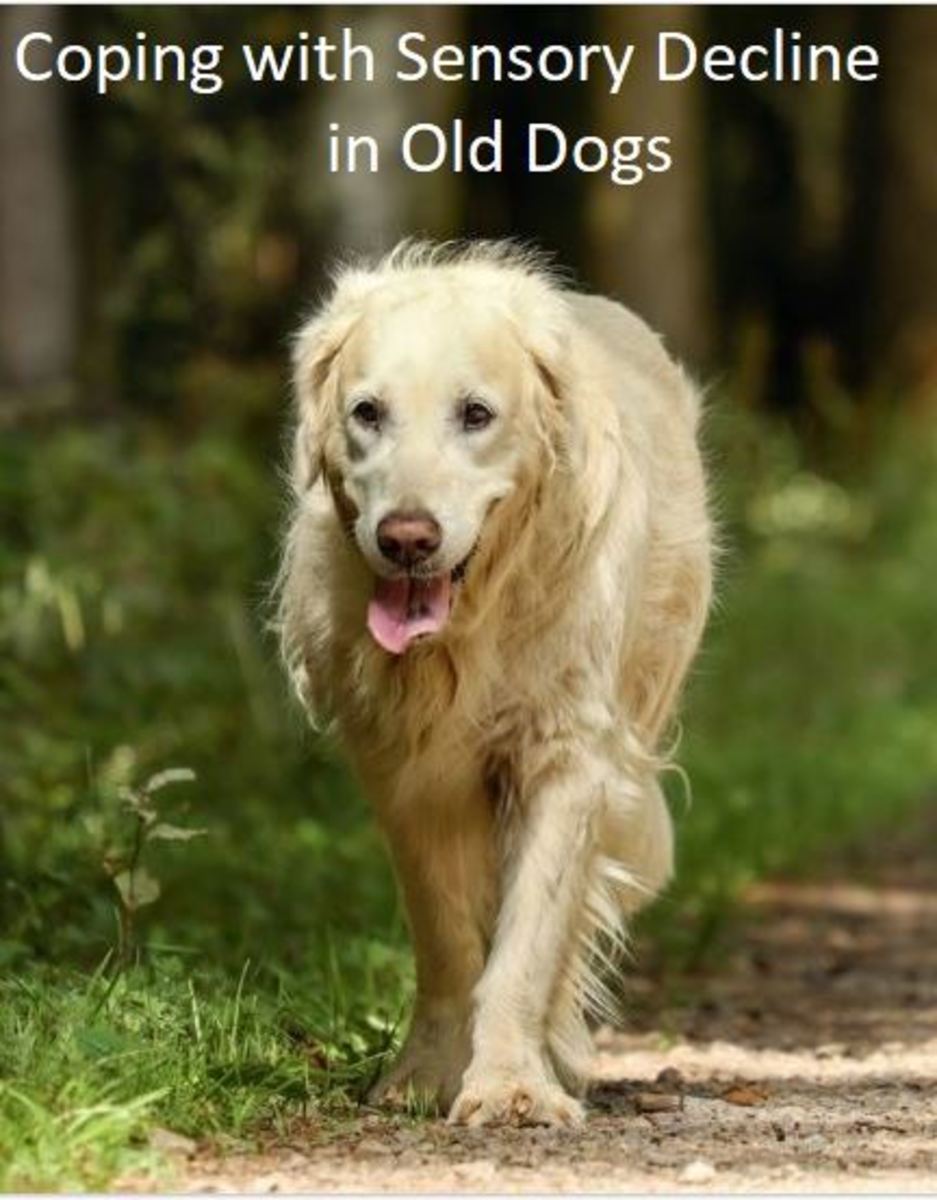What Does A Vet Say About Canine Hip Dysplasia?

According to the Baker Institute for Animal Health, over 50 percent of all large breed dogs suffer from hip dysplasia. Your pet could exhibit symptoms as early as four months or the condition could go unnoticed for quite some time if your pet has a high tolerance for pain. In today's interview, Dr. Cathy Alinovi of Hoofstock Veterinary Services discusses her clinical experience with her patients in regards to canine hip dysplasia.
Question 1: What is canine hip dysplasia?
Dr. Cathy: The word breaks down thus: "dys" means bad or not right, "plasia" means development or formation. Therefore, hip dysplasia is poor development of the hip joint. The normal hip joint is a ball and socket. This means the top (head) of the leg (femur) fits into the pelvis like a key in the ignition. If the key does not fit right, the car can be hard to start.
Similarly, if the hip joint is sloppy, it puts extra strain on the muscles holding it all together. If that muscle strain starts to hurt, the dog starts to limp, or moves its weight forward to the shoulders, and the dog loses muscle over the back end.
Q2: What causes it?
Dr. Cathy: Genetics and rapid growth are the causes of hip dysplasia. For instance, big dogs are bred to be bigger and bigger. Twenty years ago, Rottweilers used to weigh 60 pounds. Now, Rotties are bred to be 100-pound dogs. However, in this artificial selection, instead of choosing dogs with genetically sound joints, most breeders just picked big dogs.
Unfortunately, these big dogs tend to have sloppy, loose hip joints. Additionally, we feed them foods that cause rapid growth. Rapid growth leads to uneven growth, which is emphasized in the hip joint.
Furthermore, recent studies show early spays and neuters cause dogs to grow too tall. While this seems backwards, numerous other species show the same uneven growth. In large breed dogs, this uneven growth often affects the hip joints and makes dysplasia worse.
Q4: How common is canine hip dysplasia?
Dr. Cathy: It is one of the most common diseases of large breed dogs. Over 50% of large breed dogs are believed to have hip dysplasia. Worse statistics tell us that pups from parents who are both dysplastic are 75% likely to have hip dysplasia.
Q3: Can it be prevented?
Dr. Cathy: It can be helped. Responsible breeding of future generations of dogs by selecting for those who may be a bit smaller and have sounder joints will help future generations. Today’s puppies should be fed for slow growth with high quality foods. For these pups, it is best to wait to spay/neuter so they can grow to their proper proportions, and breed responsibly so we do not make extra pups from accidental breeding.
How to Exercise a Dog With Hip Dysplasia
Q6: What symptoms would alert pet owners to a problem?
Dr. Cathy: Common symptoms include but are not limited to:
- Limping
- Slow to rise
- Changes in exercise behavior
- Crankiness
- Back pain,
- Bunny hopping instead of running
Additionally, the shoulders may be affected as well due to the dog shifting the weight of the painful hips to the shoulders.
Q5: What role do genetics play in hip dysplasia?
Dr. Cathy: Currently, it is 30% of the problem.
However, if dogs with dysplasia continue to breed to each other, the role genetics play will increase.
The other 70% of the factors involved in hip dysplasia are the quality of nutrition, how hard they play as puppies, age of spay or neuter, and whether the dog becomes obese as an adult.
Q7: As a vet, how would you diagnosis hip dysplasia?
Dr. Cathy: First, X-rays of the hips are diagnostic. The other commonly used test is called the ortalani sign. The vet has the dog lay on its back and pushes down and out on the leg to see if the joint will click. The click sound is what it sounds and feels like when the head of the femur pops out of the hip joint. It’s a creepy sound and feeling – bone on bone crunch.
Q8: Are there certain breeds that are predisposed to this condition?
Dr. Cathy: Actually, the list of breeds prone to hip dysplasia is long. For example, the Orthopedic Foundation for Animals chart "Trends in Hip Dysplasia" lists 168 dysplastic breeds. Of those, bulldogs are #1 with 61.2 percent of the breed being dysplastic. That suggests it is not just a genetic thing but that environmental factors definitely play a role in the development of hip dysplasia. See the table below for an alphabetical list of some at-risk breeds.
Breeds At Risk for Hip Dysplasia
Bernese Mountain Dog
|
Bloodhound
|
Boxer
|
Brittany Spaniel
|
Bulldog
|
Chesapeake Bay Retriever
|
Dogue de Bordeaux
|
English Setter
|
English Springer Spaniel
|
Glen of Imaal Terrier
|
Golden Retriever
|
Gordon Setter
|
German Shepherd
|
Labrador Retriever
|
Neapolitan Mastiff
|
Old English Sheepdog
|
Perro de Presa Canario
|
Pug
|
Standard Poodle
|
Rottweiler
|
St. Bernard
|
Welsh Springer Spaniel
|
Welsh Corgi
|
Q9: Are there other conditions, which mimic hip dysplasia?
Dr. Cathy: Yes, just about anything that causes pain in the rear. Arthritis, a condition of little dogs called Legg-Perthes-Calves disease, and intervertebral disc disease, amongst others, can look like hip dysplasia.
Q12: What types of treatment are available?
There is actually quite a long list of available treatments such as:
- Gentle exercise
- Weight control
- Pain medication
- Anti-inflammatories
- Surgery
- Laser therapy
- Veterinary spinal manipulation therapy
- Acupuncture
- Herbal medications
- Nutraceuticals
Whew, long list. Many of these modalities are also used to treat or manage the pain of canine arthritis.
Q10: Should I allow my dog to exercise? If so, what types of exercise are best?
Dr. Cathy: Exercise is a fabulous treatment for hip dysplasia, especially low impact exercise like swimming and walking. The awesome thing about moving the muscles is it blocks the pain information coming from the hips.
This is why dogs seem more painful at night. They lie down, stop moving, and the pain level increases. The other important thing about exercise is it needs to be done every day. Consistent, low impact exercise is the key.
Q11: What role does diet play in managing hip dysplasia?
Dr. Cathy: Before a dog is even grown, diet plays a huge role in whether and to what extent hip dysplasia will develop. If the pup is fed hard with “hot” foods, it will grow quite fast and disproportionately. Hot foods means those based on grains – like our kids on sugar – burn it up, 10 minutes of high energy, then crash for the next hour. These same foods present a problem for the adult dog with hip dysplasia. In adult dogs, these foods lead to obesity, which puts extra strain on the hips and makes things weaker.
Examples: Some Treatments for Hip Dysplasia
Non-surgical treatments and nutritional treatments are the same as for canine arthritis, which I have discussed in detail in two other Hubpages articles entitled "Ask the Vet: Arthritis Pain Treatments and Pain Management," and "Vet Tips: Managing Your Dog's Arthritis with Exercise and Weight Management."
However, briefly, the idea is to control the dog's weight with diet, good nutrition and the appropriate supplements. Less weight on the joints means less pain. When you combine a program of weight management with the appropriate exercise, the dog's quality of life improves tremendously. As I mentioned earlier, swimming and low-impact exercises help strength the joint and reduce the pain.
Your personal vet can make recommendations about the best types of pain medications to help alleviate any pain that is not relieved by these methods.
Surgical treatment: There are four main surgical options.
- Triple Pelvic Osteotomy (TPO):"Osteo" means bone, "otomy" means open or cut. Therefore, surgeons cut the pelvis in three places to rotate the pelvis over the top of the leg bone. Dogs must be younger than 10 months to qualify for this surgery. It is expensive and painful.
- Femoral Head Ostectomy (FHO): "Ectomy" means cut off. When the FHO surgery was first used, it was considered a salvage surgery and was supposed to work best in little dogs. After time, it was done more commonly in big dogs as it was discovered they do much better without the bone on bone grinding.
- After the femoral head is removed, the body forms a pseudo-joint – this means it fills in with cartilage and scar tissue. Regardless, the source of the pain is removed and the muscles hold everything in place. This surgery can be done at any age. Healing time depends on how soon the dog gets back up and moving.
- Juvenile Pubic Symphysiodesis: The pubic bone is the one at the far end of the pelvis, towards the tail. The pubic "symphysis" is the interdigitated joint between the right and left of the pubis. "Desis" means binding. This is a premature fusing of the two sides of the pubic symphysis. Dogs must be less than 4 months old to qualify for this surgery. It is less likely females will be able to have puppies if their pelvis is fused because it is normal to have movement at the pubic symphysis during delivery.
- Total Hip Replacement: This surgery is just like the operations humans undergo and can result in the best anatomy and least pain once the healing is done. The surgery can be done on any adult, as long as the rest of the pelvis is not incredibly arthritic. This is the most expensive surgery.

Q13: How painful is hip dysplasia, and what types of pain management are available?
Dr. Cathy: The crazy thing is that how bad the hips look on x-rays is not directly related to the level of pain. Dogs with horrible X-rays may have a minor limp and play without issues. Dogs with minor problems according to the X-rays may have the hardest time even getting up from lying down, and I've probably seen every combination in between. For some dogs, the pain can be awful. However, just like the arthritic dog, there is quite an array of medications and treatment options to help with the pain.
As with any other illness, if left untreated, hip dysplasia can lead to other health conditions such as arthritis or degenerative joint disease. If you suspect your pet may be having hip problems, it's a good idea to get him or her to your vet as quickly as possible for an evaluation.
Other Interesting Dog Breed Articles
- Dogue de Bordeaux: The Mastiff Breed That Can't Be Exterminated
The Dogue de Bordeaux has survived at least two extermination efforts and is a hardy breed. Learn why they make good family pets in the right situation. - Bernese Mountain Dogs: Playful Pets and Energetic Working Dogs
Are Bernese Mountain dogs good pets? Find out the facts! - Arthritis Pain Relief for Dogs: Alleviating Your Best Friend's Pain Safely
Dr. Jules Benson discusses the best arthritis pain relief for dogs.
Reference Sources
Email interview, 12/2013, Dr. Cathy Alinovi, Hoofstock Veterinary Services
Orthopedic Foundation for Animals, "Trends in Hip Dysplasia," http://www.offa.org/stats_hip.html
Cornell University, College of Veterinary Medicine, Baker Institute for Animal Health,
"Canine Hip Dysplasia," http://bakerinstitute.vet.cornell.edu/animalhealth/page.php?id=1104
© 2013 Donna Cosmato





